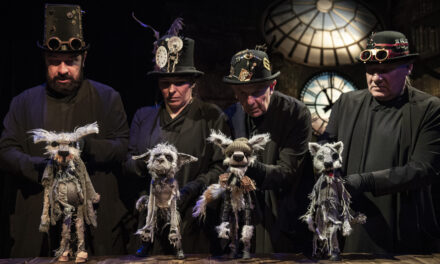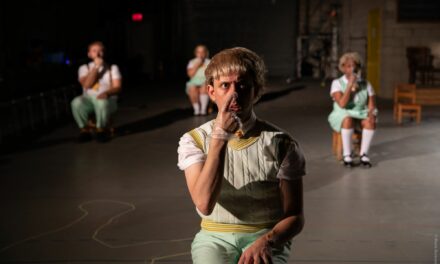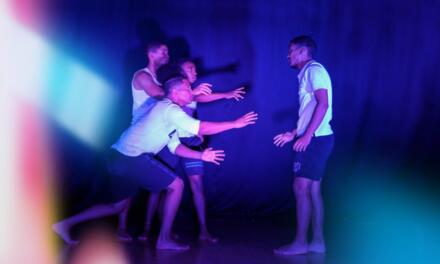This afternoon, we checked out The Little Company’s Hanuman: The Superhero Monkey, a multimedia musical based on the stories of Hanuman, the courageous and cheeky Hindu monkey-god. Created in collaboration with imitating the dog, a renowned U.K.-based theatre company, Hanuman: The Superhero Monkey is a part cartoon, part film, part musical, and part physical theatre, and features music by Soumik Datta, a British Indian composer.
Although Hanuman: The Superhero Monkey draws inspiration from the events of the Ramayana—the abduction of Sita, the Battle of Lanka, etc.—it is not a faithful retelling of the epic. In this highly original production, Hanuman, who has a weakness for banana smoothies, is joined by a Power Ranger-esque band of monkey friends (Millie, Riley, Taylor, and Stacy) to save Sita and destroy Ravana, who is represented, oddly, by a Sauron-like eye, rather than by/with his characteristic ten heads.
The good: Zachary Ibrahim (Hanuman) carried the show. He had a commanding presence, so much more than his co-stars. The show’s visual elements, from conventions of comic book art (panels, silhouettes, burst lines) to evocative lighting design, were just enchanting. But it was the performance’s music, composed by Soumik Datta, virtuoso sarod player and disciple of Pandit Buddhadev Das Gupta, that elevated Hanuman: The Superhero Monkey. Datta is best known as a master of the sarod, a fretless, lute-like instrument, and here he combines Indian classical melodies with drum and bass percussion.
The not-so-good: Several scenes, including those in which Hanuman and his merry band confronted Kumbhakarna, the younger brother of Ravana, and Surasa, mother of the nagas (serpents), ran a bit too long and offered humor that fell rather flat. And Hanuman: The Superhero Monkey is not suitable for children with who have sensory disabilities. The play involves startling and loud sounds and flashing lights and total darkness.
This article was originally published on notabilia.wordpress.com. Reposted with permission. Read the original article.
This post was written by the author in their personal capacity.The opinions expressed in this article are the author’s own and do not reflect the view of The Theatre Times, their staff or collaborators.
This post was written by Pooja Makhijani.
The views expressed here belong to the author and do not necessarily reflect our views and opinions.


















